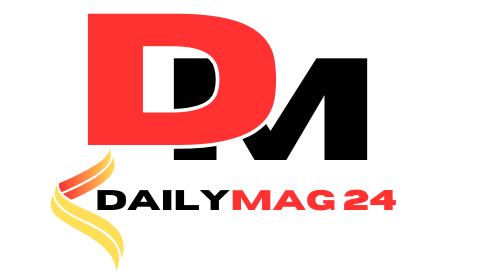Introduction to Kuber Chart
In the ever-evolving world of finance, having a reliable tool to track and manage your wealth is crucial. With various investment options, fluctuating markets, and changing financial goals, it can be challenging to keep everything in order. The Kuber Chart is a financial tool designed to help individuals and businesses manage their wealth efficiently. It provides a visual representation of your assets, liabilities, income, and expenses, giving you a clear overview of your financial health. The chart is often used to track investments, monitor cash flow, and plan for future financial needs.
This is named after the Hindu deity Kuber, who is considered the treasurer of the gods and the lord of wealth. Just as Kuber is believed to protect and increase wealth, the Kuber Chart aims to safeguard your finances and help you grow your assets. It’s a tool that encourages disciplined saving, strategic investing, and careful financial planning.
How Does the Kuber Chart Work?
The Kuber Chart operates by organizing and categorizing your financial data into a clear and easy-to-understand format. It typically consists of several key sections:
- Assets: This section lists all your assets, including cash, investments, real estate, and other valuable possessions. The chart helps you track the growth or depreciation of these assets over time.
- Liabilities: Here, you’ll find all your debts and obligations, such as loans, mortgages, and credit card balances. The Kuber Chart allows you to monitor your liabilities and plan strategies to reduce or eliminate them.
- Income: This section details your sources of income, whether from a salary, business revenue, or passive income streams like dividends or rental income. The chart helps you track income patterns and identify opportunities for growth.
- Expenses: All your expenditures are categorized in this section, from daily living expenses to large purchases. By analyzing this data, the Kuber Chart helps you identify areas where you can cut costs and save more.
The Benefits of Using the Kuber Chart
Using the Kuber Chart offers numerous benefits, making it a valuable asset for anyone looking to improve their financial management. Some of the key advantages include:
1. Clear Visualization of Wealth
This provides a comprehensive overview of your financial situation at a glance. By visualizing your assets, liabilities, income, and expenses, you can quickly assess your financial health and make informed decisions.
2. Improved Financial Planning
With the it, you can plan for the future with greater confidence. The chart’s projections help you anticipate future financial needs, allowing you to save and invest strategically. Whether you’re planning for retirement, a major purchase, or your children’s education, the Kuber Chart helps you set realistic goals and track your progress.
3. Better Investment Management
The Kuber Chart helps you manage your investments by tracking their performance and growth. It allows you to see which investments are performing well and which ones may need reevaluation. This insight is crucial for optimizing your portfolio and maximizing returns.
4. Efficient Debt Management
Managing liabilities is a critical aspect of financial health, and the Kuber Chart excels in this area. By clearly displaying your debts and their terms, the chart helps you prioritize debt repayment and avoid costly interest payments. It also helps you plan strategies to pay off debt faster and more efficiently.
5. Enhanced Budgeting and Expense Tracking
One of the most practical uses of the Kuber Chart is in budgeting and expense management. By categorizing and tracking your expenses, the chart helps you identify spending patterns and areas where you can cut costs. This feature is particularly useful for creating and sticking to a budget.
How to Create Your Own Kuber Chart
Creating your own Kuber Chart is a straightforward process that involves gathering your financial data and organizing it into the chart’s key sections. Here’s a step-by-step guide:
1. List All Assets
Start by listing all your assets, including cash, savings accounts, investments, real estate, vehicles, and other valuable possessions. Include the current market value of each asset.
2. Record Liabilities
Next, list all your liabilities, such as loans, credit card balances, and mortgages. Note the outstanding balance and the interest rate for each debt.
3. Track Income Sources
Record all sources of income, including your salary, business income, rental income, dividends, and any other revenue streams. Be sure to include the frequency of each income source (e.g., monthly, annually).
4. Document Expenses
List all your expenses, both fixed (e.g., rent, mortgage payments) and variable (e.g., groceries, entertainment). Include the amount spent and the frequency of each expense.
5. Analyze and Plan
Once you’ve organized all your data, use the Kuber Chart to analyze your financial situation. Look for trends, identify areas for improvement, and set financial goals. Use the chart’s projections to plan for future needs and make adjustments as necessary.
Why the Kuber Chart is Essential for Modern Wealth Management
In today’s fast-paced financial environment, managing wealth effectively requires more than just a basic understanding of money. The Kuber Chart provides the structure and insights needed to navigate complex financial decisions with confidence.
Whether you’re managing personal finances or running a business, It offers a clear path to financial success. It helps you stay organized, make informed decisions, and achieve your financial goals more efficiently. As you track your progress with the Kuber Chart, you’ll gain a deeper understanding of your finances, leading to better financial outcomes.
Conclusion
This is more than just a tool—it’s a comprehensive guide to mastering your finances. By providing a clear and detailed view of your financial situation, it empowers you to make informed decisions and achieve your wealth goals. Whether you’re just starting your financial journey or are a seasoned investor, the Kuber Chart offers valuable insights that can help you grow and protect your wealth.
In a world where financial success requires careful planning and strategic thinking, It is an indispensable resource. It helps you visualize your wealth, manage your investments, and plan for the future with confidence. By integrating the Kuber Chart into your financial strategy, you can take control of your finances and secure a prosperous future.
Also Read: MyFastBroker Trading Apps: Unlocking Your Potential
FAQs
What is the Kuber Chart?
It is a financial tool designed to help individuals and businesses manage their wealth by providing a visual representation of assets, liabilities, income, and expenses. It is used for tracking investments, monitoring cash flow, and planning future financial needs.
How does the Kuber Chart help with financial planning?
It aids financial planning by offering a clear overview of your financial situation and projecting future trends. This allows you to set realistic financial goals, plan for major life events, and make informed investment decisions.
Can I create my own It ?
Yes, you can create your own Kuber Chart using spreadsheet software like Excel or Google Sheets, or by using dedicated financial planning tools. The process involves organizing your financial data into categories such as assets, liabilities, income, and expenses.
Why is the Kuber Chart named after a Hindu deity?
It is named after Kuber, the Hindu god of wealth and prosperity. The chart embodies the principles of wealth protection and growth, aligning with the attributes associated with Kuber.












